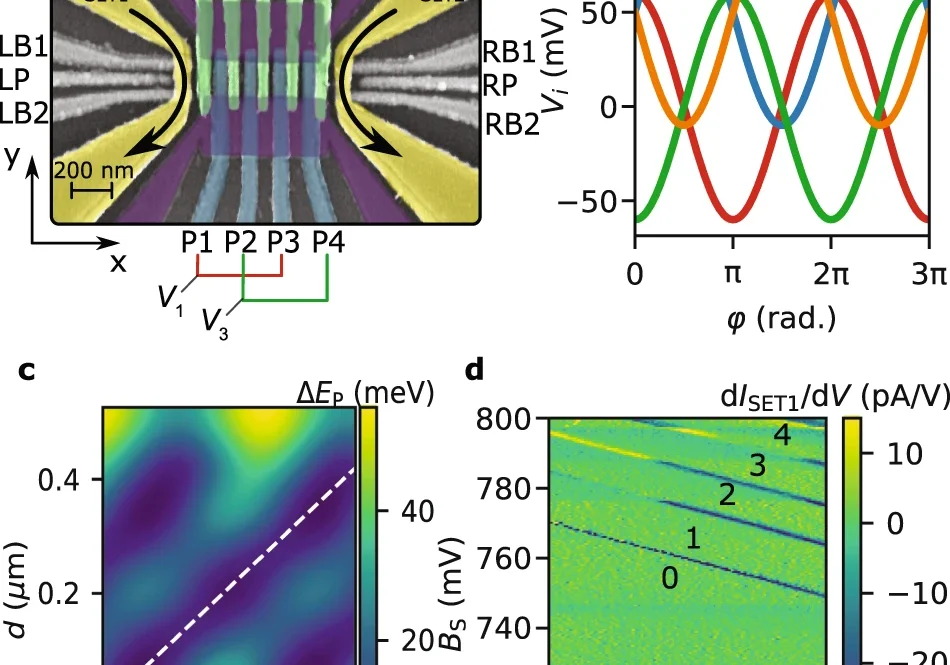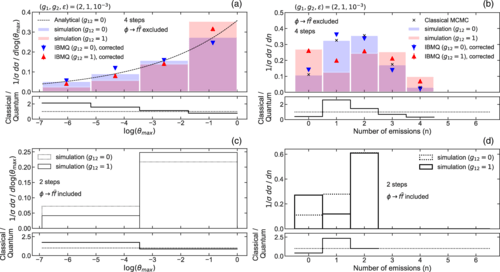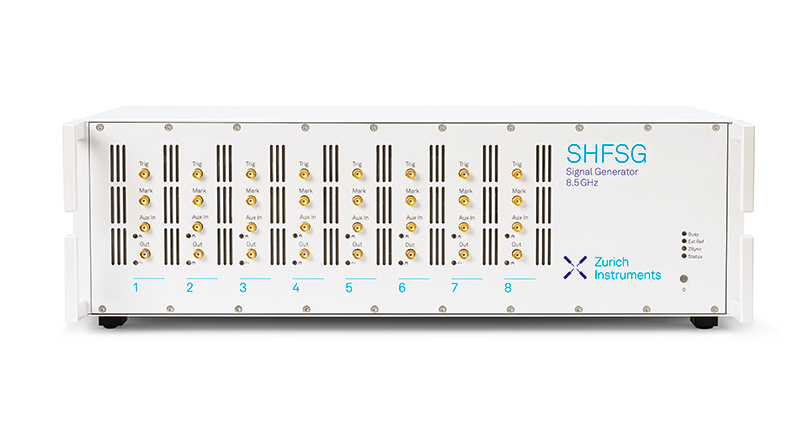Single-electron spin qubits in Si/SiGe quantum dots have achieved significant milestones in quantum computing, surpassing the fidelity threshold needed for quantum error correction in both single and two-qubit gates. While this progress is promising, scaling up these quantum computing systems faces a significant challenge: the dense packing of semiconductor qubits at their natural coupling range (around 100 nm) creates prohibitive wiring density and leaves insufficient space for essential components like readout sensors and control circuits.
To address this challenge, researchers have developed a novel approach using a quantum bus (QuBus) that implements conveyor-mode shuttling of electrons. This method enables coherent qubit coupling over distances of several microns, effectively connecting dense qubit registers while maintaining high fidelity. The key innovation lies in the shuttling mechanism, which uses just four sinusoidal control signals to create a propagating wave-potential, regardless of the shuttling distance. This represents a significant improvement over previous approaches that required additional controls as distance increased.
The research team demonstrated this concept in an undoped Si/SiGe heterostructure, achieving smooth electron shuttling over a 420 nm quantum-channel with remarkably high fidelity of 99.42 ± 0.02%, including successful directional reversal. The conveyor-mode shuttling approach offers several advantages: it enables smooth and adiabatic electron transport, requires minimal tuning effort, and can be easily integrated into existing industrial fabrication processes for Si/SiGe qubit chips.
This development addresses the critical signal-fanout problem in scalable semiconductor quantum computing architectures. Unlike alternative approaches such as spin-to-photon-to-spin conversion or surface acoustic wave shuttling, the conveyor-mode QuBus provides a more practical solution for micron-scale coupling while maintaining compatibility with current manufacturing techniques.
The success of this proof-of-principle demonstration, particularly in achieving high fidelity shuttling without electron trapping due to disorder (a previously concerning failure mode), suggests that this approach could be a key enabling technology for scalable quantum computing architectures. The ability to connect small spin-qubit registers while maintaining minimal control overhead represents a significant step forward in addressing one of the fundamental challenges in scaling up quantum computing systems.
npj Quantum Information, Published online: 30 August 2022; doi:10.1038/s41534-022-00615-2



